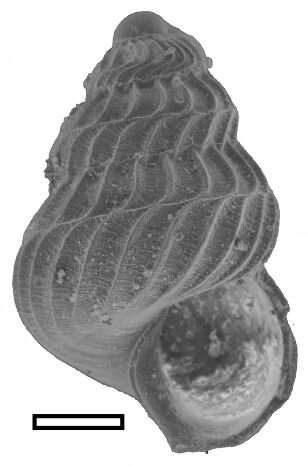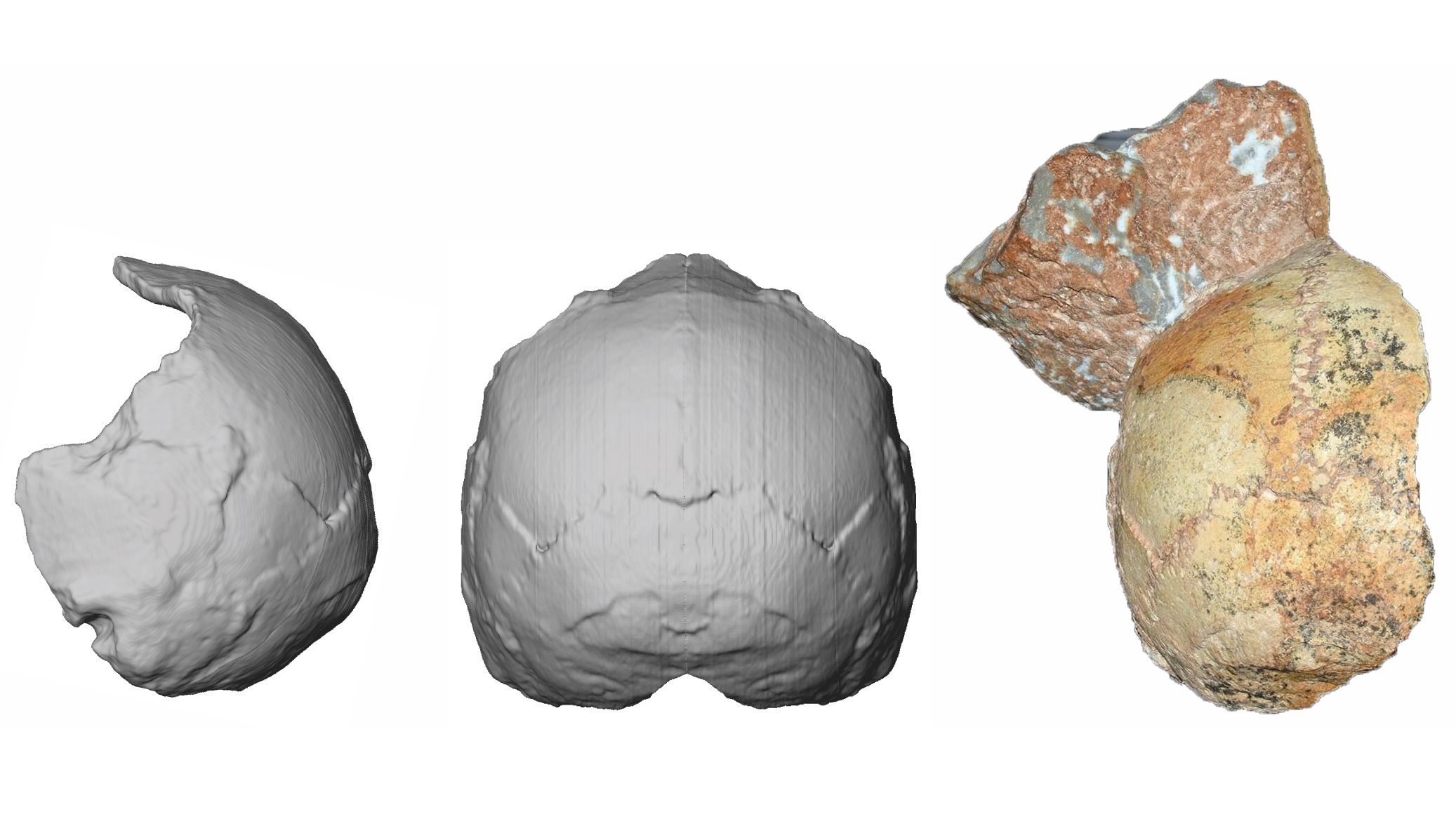A group of researchers led by Dr Robert Hazen from Carnegie Institution of Washington has found well-preserved protein sheets in 15-million-year-old fossilized shells of a snail-like mollusk called Ecphora.

This image shows a 15-million-year-old fossil mollusk, Ecphora gardnerae germonae, from the Calvert Cliffs of southern Maryland; the golden brown color arises from the original shell-binding proteins and pigments preserved in the mineralized shell. Image credit: © John Nance.
Ecphora mollusks represent an extinct group of gastropods that lived from the late Oligocene to the Pliocene.

They are known for an unusual reddish-brown shell color. This coloration is preserved in fossilized remains, unlike the fossilized shells of many other fossilized mollusks from the Calvert Cliffs region, Maryland, which have turned chalky white over the millions of years since they housed living creatures.
Shells are made from crystalline compounds of calcium carbonate interleaved with an organic matrix of proteins and sugars proteins and sugars. These proteins are called shell-binding proteins by scientists, because they help hold the components of the shell together.

They also contain pigments, such as those responsible for the reddish-brown appearance of the Ecphora shell. These pigments can bind to proteins to form a pigment-protein complex.
The fact that the coloration of fossilized Ecphora shells is so well preserved suggested to Dr Hazen and his colleagues that shell proteins bound to these pigments in a complex might also be preserved.
They were amazed to find that the shells, once dissolved in dilute acid, released intact thin sheets of shell proteins more than a 1 cm across.

Chemical analysis including spectroscopy and electron microscopy of these sheets revealed that they are indeed shell proteins that were preserved for up to 15 million years.
“These are some of the oldest and best-preserved examples of a protein ever observed in a fossil shell,” said Dr Hazen, who is the senior author of a paper published in the journal Geochemical Perspectives Letters.
Remarkably, the proteins share characteristics with modern mollusk shell proteins.

They both produce thin, flexible sheets of residue that’s the same color as the original shell after being dissolved in acid.
Of the 11 amino acids found in the resulting residue, aspartate and glutamate are prominent, which is typical of modern shell proteins.
Further study of these proteins could be used for genetic analysis to trace the evolution of mollusks through the ages, as well as potentially to learn about the ecology of the Chesapeake Bay during the era in which Ecphora thrived.
Source: sci.news








